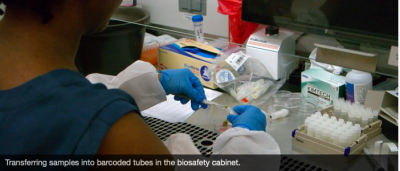
“Collecting wastewater has been a way to locate outbreaks before they have a chance to spread out of control.”
Kendra Maas, Ph.D. is the facility scientist for UConn’s Microbial Analysis, Resources, and Services laboratory(MARS) and has teamed up with University of Connecticut Student Health and Wellness(SHaW) to monitor COVID-19 on campus.
Starting at the end of June, Maas began to employ wastewater-based epidemiology (WBE), an old microbiology technique used by public health officials during cholera outbreaks in the late 1800s. Instead of looking at individuals, WBE looks at different wastewater locations to detect areas of campus that have infected individuals.
Soon after contracting COVID, individuals begin to shed large amounts of the virus through their feces, even before they become symptomatic. The virus shows up in the wastewater samples Maas collects, showing the general area of the campus the infected individuals are.
“I wanted to do this method because with just a few samples, we can get a snapshot of what’s going on all across campus,” said Maas. “I thought this could help the university with COVID protocol, because there’s a serious backlog for testing across the nation.”
The level of COVID in wastewater increases about seven days before a significant increase in cases are reported. Maas said this warning could prove critical in limiting the potential for an outbreak on campus.Her lab’s public health monitoring can detect it as it’s happening and faster than you can test individual, symptomatic people, because people start shedding virus before they feel sick.
MARS currently processes up to 12 wastewater samples every day with eight pumps across campus. Dr. Maas hopes to attain seven more water pumps, so they can test up to 48 samples per day.
“You don’t want to get a sample quickly, because that isn’t really representative for what’s happening in that building or that cluster of buildings,” said Maas. “That’s just representative of what happened in the past five minutes, so we collect samples over the whole day.”
Testing for the virus in wastewater is more concerned with making sure the levels of virus stays the same or decreases, according to Maas. Increasing levels of virus prompts MARS to alert SHaW and implement procedures in those areas of campus.
“The biggest thing about looking for COVID, because people shed it in their feces for so long after they’re infectious, then you don’t say this sample is positive or this is negative,” said Maas.
Ultimately, Maas hopes the wastewater surveillance developed at UConn might also be applied to other wastewater systems. She emphasizes the importance of using efficient and cost effective techniques, as to make health minoring “accessible and attainable for any institution or town.”